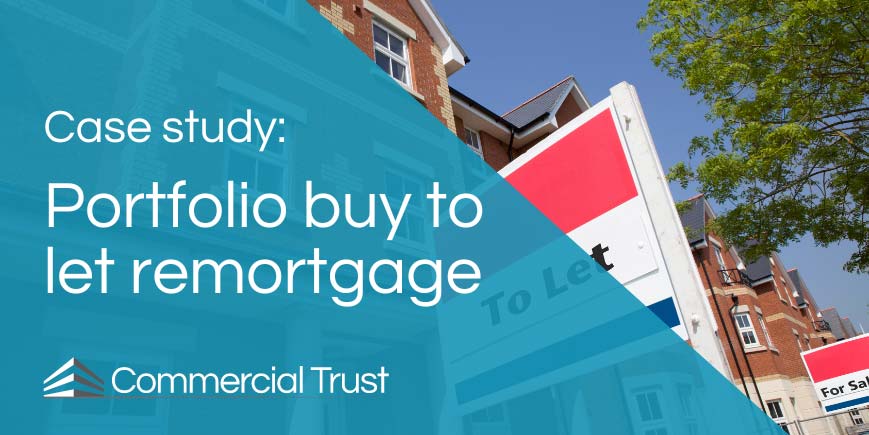This information should not be interpreted as financial, tax or legal advice. Mortgage and loan rates are subject to change.

Categories: Case study | Case study buy to let mortgages | portfolio landlords
Case studySummary of the case
- Portfolio landlord was looking to remortgage one of their properties
- Capital raising was required for an onward purchase
- Property was a licensed HMO with 6 tenants on one tenancy agreement
What we achieved for the client
- Maximum possible borrowing for future investment
- Remortgaged property on to 5 year fixed deal for rate certainty
Contents
Buy to let portfolio remortgage scenario
Why is a buy to let renewal date critical?
How cost effective are portfolio buy to let mortgages?
How widely available is portfolio lending?
How does portfolio lending differ from standard buy to let?
Securing the right remortgage deal for our portfolio landlord client
Buy to let portfolio remortgage scenario
A client approached us looking to remortgage one of properties amongst their buy to let portfolio. They were approaching the renewal date of the mortgage, when the deal period of the existing product was coming to an end.
At this point it is always sensible to re-review the marketplace for another deal and the client also wanted to raise capital from the property, with a view to making further property investments.
Why is a buy to let renewal date critical?
A buy to let renewal date is critical, because it is the date on which your current mortgage interest rate deal ends. Each time you secure a buy to let mortgage, the lender will offer you a mortgage interest rate deal for a given period of time. Typically this will be over a 2 or 5 year period, and sometimes over 1, 7 or 10 years.
This is the duration over which the lender is prepared to offer you the interest rate they have specified that they will charge you, for borrowing money from them.
This period of time is referred to as the ‘deal period’ or ‘initial rate period’ of the mortgage.
When this timeframe comes to an end, the mortgage does not stop, but, unless you organise another deal, your mortgage interest rate will be moved on to the lenders ‘reversion rate’ – a default rate of charge that the lender has calculated.
The reversion rate is normally higher than the mortgage interest rate you will have been on. For this reason it is important to see if there are other more cost effective options available to you.
It also gives you the opportunity to review your mortgage needs and see if you want to make any changes to your borrowing.
How cost effective are portfolio buy to let mortgages?
For clients with multiple properties, having one portfolio mortgage product to finance them all has its administrative benefits. One renewal date, one rate, one set of documents etc. etc. However, this doesn’t often provide the most cost effective outcome for the borrower.
There are a huge number of factors that affect the mortgage interest rate a lender will charge, and that impact the suitability of a mortgage product for a given property.
Where a portfolio landlord has a large number of properties that sit along a scale of risk, with a portfolio buy to let mortgage the lender has to charge an interest rate to cover all scenarios. This is why having individual products per property typically results in a lower overall interest rate, and as a result a lower monthly mortgage cost.
How widely available is portfolio lending?
Portfolio lending, where one product is used to finance many buy to let properties, is offered by a modest number of lenders.
This is because the requirement for the products is relatively low, which is driven by the fact that it is typically more cost effective to tailor one mortgage product to one property.
Although having a different mortgage for each property owned means a lot of administration, the positive financial benefits typically outweigh the detrimental administrative work.
How does portfolio lending differ from standard buy to let?
Arranging a portfolio lending differs, even when just dealing with one property amongst many, because lenders will usually look at the borrowing across all the other properties a landlord owns.
Lenders will do this to make sure a landlord is not financially vulnerable elsewhere in their portfolio, as it could have an impact on them being able to repay a new mortgage deal.
Lenders assess whether a BTL portfolio is financially robust in a couple of key ways:
- Overall portfolio loan to value
- Affordability based on rental income
If the overall loan to value being borrowed across the portfolio is under a given lenders requirement, they will be prepared to offer a mortgage if all other checks are met.
If the total rent coming in across all the properties the landlord owns exceeds the mortgage costs by a given percentage, again, the lender will consider offering an additional mortgage deal to the landlord.
Securing the right remortgage deal for our portfolio landlord client
In the case of our client, their portfolio was fairly sizable, so the lender we went to did look at the borrowing across all their properties.
Fortunately the client had a financially sound portfolio and enough capital available in the property we were handling for them, to allow us to release the cash they wanted.
In fact, whilst the client was working with our advising team, it became apparent that mortgage rates were rising, so the client decided to borrow as much as they could on the available deal, in order to take advantage of the rate they were being offered.
Having successfully released the maximum borrowing achievable, the client is now in a strong position to invest, when the right opportunity comes along.



